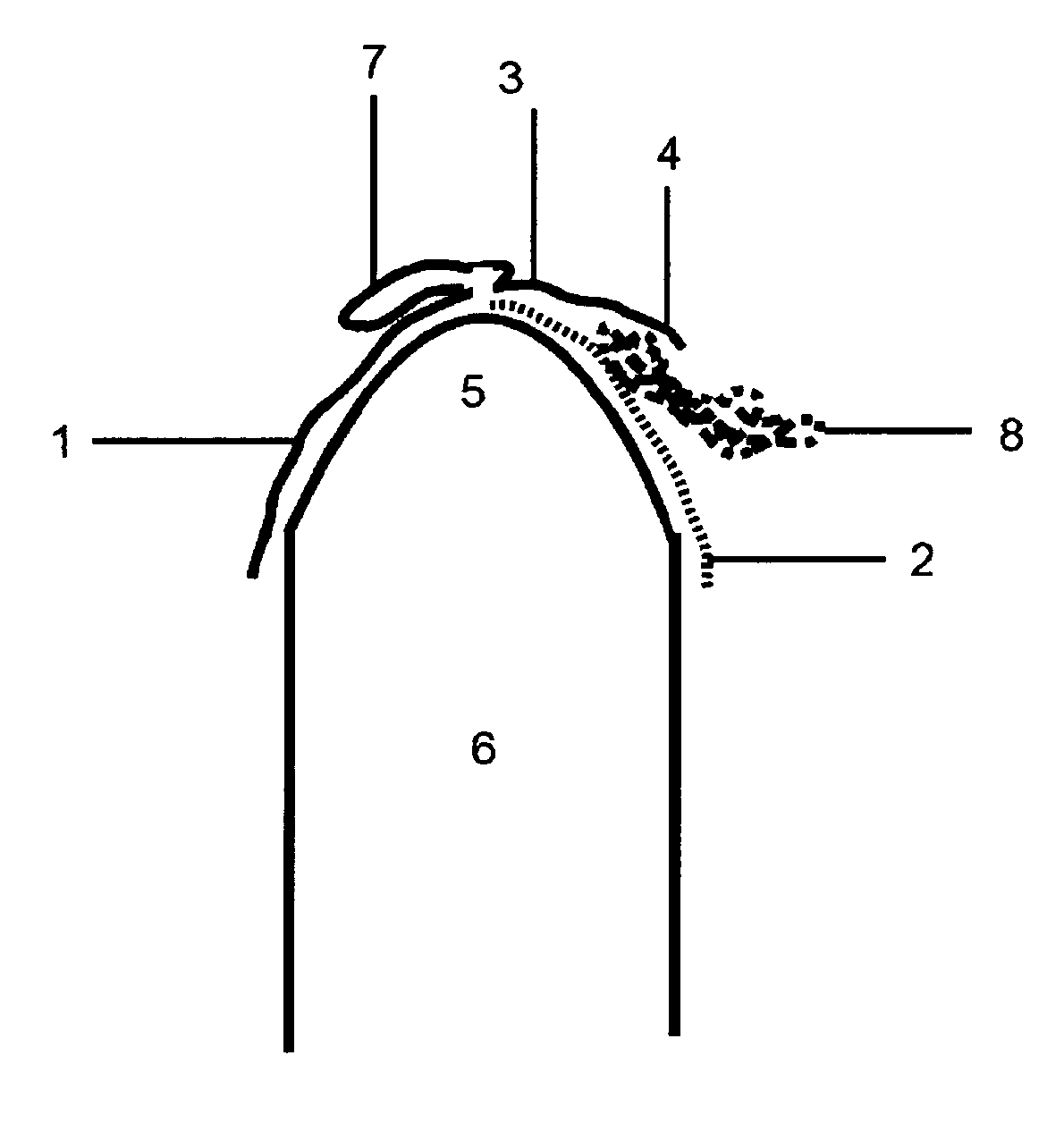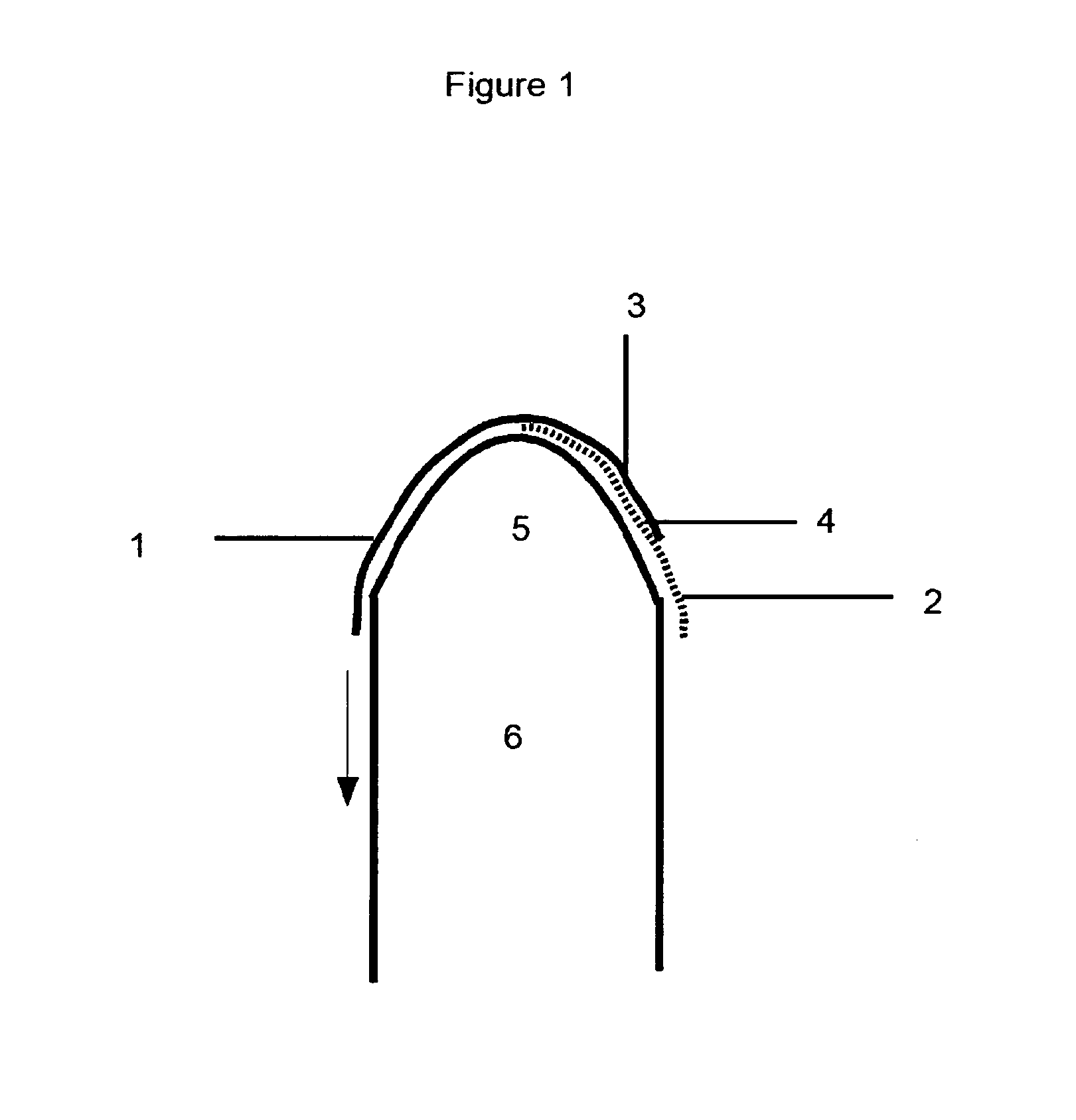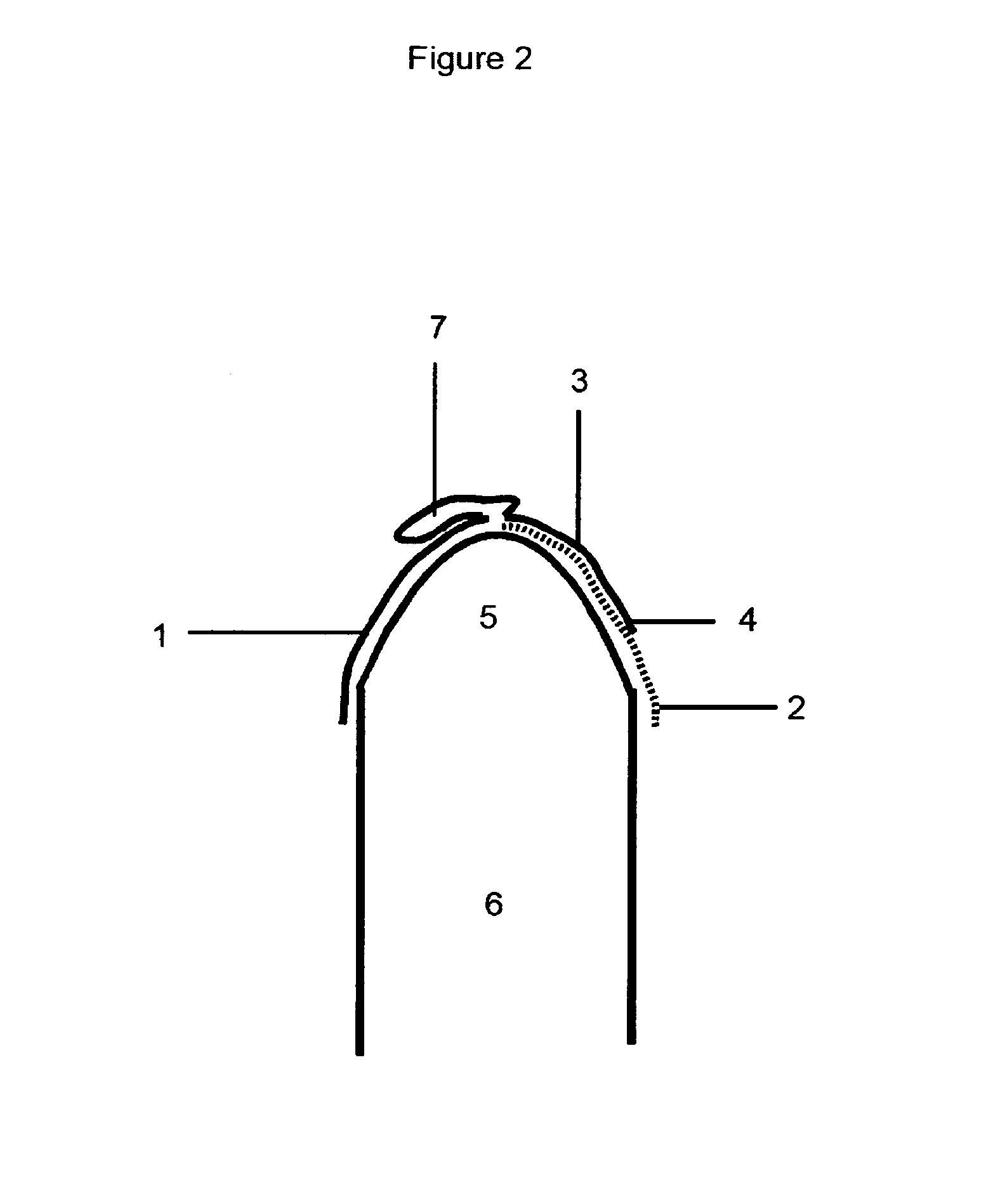Condom valve
a valve and condomium technology, applied in the field of condomium valves, can solve the problems of wasting, hazardous, and ineffectiveness of partial length condoms, and reducing the use of condoms
- Summary
- Abstract
- Description
- Claims
- Application Information
AI Technical Summary
Problems solved by technology
Method used
Image
Examples
Embodiment Construction
[0037]Condoms currently either integrate a reservoir at their end, or are finished to fit flush with the glans penis. A construction of overlapping membranes is envisioned for the distal (tip of glans penis) end of the condom that would be constructed in such a way that the more superficial layer of this construct would open under application of pressure and expose a conduit to permit to conduction of semen beyond the borders of the condom.
[0038]Specifically, two embodiments are envisioned. In the first the intent of the condom is to protect against STDs (or reflux of rectal contents), but permit conception. The two layers would be tightly apposed to the glans penis. The issuance of semen from the urethra would provide the pressure required to open the conduit and to transmit the ejaculate. Continued sexual activity would transmit the semen in a normal fashion into the female reproductive tract. Since the actual force of ejaculation has negligible effect on the transmission of semen...
PUM
 Login to View More
Login to View More Abstract
Description
Claims
Application Information
 Login to View More
Login to View More - R&D
- Intellectual Property
- Life Sciences
- Materials
- Tech Scout
- Unparalleled Data Quality
- Higher Quality Content
- 60% Fewer Hallucinations
Browse by: Latest US Patents, China's latest patents, Technical Efficacy Thesaurus, Application Domain, Technology Topic, Popular Technical Reports.
© 2025 PatSnap. All rights reserved.Legal|Privacy policy|Modern Slavery Act Transparency Statement|Sitemap|About US| Contact US: help@patsnap.com



